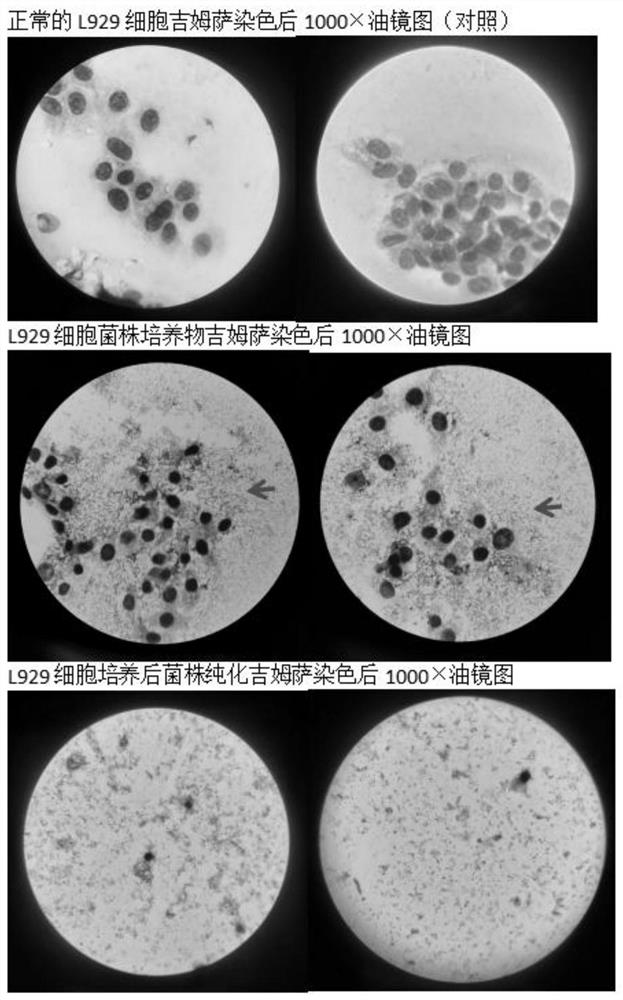Separation method of rickettsia intracellular bacteria strain
A technology for rickettsia and strain separation, applied in the field of medical microbiology, can solve the problems of difficulty in strain separation, difficulty in culturing, and low purity of strains, and achieve the effect of simple, easy-to-operate and far-reaching separation methods.
- Summary
- Abstract
- Description
- Claims
- Application Information
AI Technical Summary
Problems solved by technology
Method used
Image
Examples
Embodiment 1
[0028] A kind of Rickettsia intracellular bacterial strain isolation method that the present invention proposes comprises the following steps:
[0029] (1) Through preliminary experiments, it was found that Rickettsia grew well in mouse fibroblasts (L929 cells), so the bacterial fluid or serum containing Rickettsia was infected into L929 cells, and after 3 days of infection, Smear the cells every day and perform Giemsa staining, observe the number of bacterial cells in the cytoplasm under a microscope, until the cytoplasm is full of bacterial cells, all the adherent cells infected with Rickettsia can be scraped off for later use; Kleutzia is an intracellular parasite, which grows in the cytoplasm of the L929 cells it infects, and Giemsa staining shows purple short rods;
[0030] (2) Add the adherent cells with Rickettsia infection scraped off in step (1) and the cell culture solution obtained by compounding DMEM medium, HEPEs buffer and glutamine into 50ml centrifuge tube A ,...
Embodiment 2
[0043] A kind of Rickettsia intracellular bacterial strain isolation method that the present invention proposes comprises the following steps:
[0044] (1) Through preliminary experiments, it was found that Rickettsia grew well in mouse fibroblasts (L929 cells), so the bacterial fluid or serum containing Rickettsia was infected into L929 cells, and after 3 days of infection, Smear the cells every day and perform Giemsa staining, observe the number of bacterial cells in the cytoplasm under a microscope, until the cytoplasm is full of bacterial cells, all the adherent cells infected with Rickettsia can be scraped off for later use; Kleutzia is an intracellular parasite, which grows in the cytoplasm of the L929 cells it infects, and Giemsa staining shows purple short rods;
[0045] (2) Add the adherent cells with Rickettsia infection scraped off in step (1) and the cell culture solution obtained by compounding DMEM medium, HEPEs buffer and glutamine into 50ml centrifuge tube A ,...
PUM
| Property | Measurement | Unit |
|---|---|---|
| diameter | aaaaa | aaaaa |
Abstract
Description
Claims
Application Information
 Login to View More
Login to View More - R&D
- Intellectual Property
- Life Sciences
- Materials
- Tech Scout
- Unparalleled Data Quality
- Higher Quality Content
- 60% Fewer Hallucinations
Browse by: Latest US Patents, China's latest patents, Technical Efficacy Thesaurus, Application Domain, Technology Topic, Popular Technical Reports.
© 2025 PatSnap. All rights reserved.Legal|Privacy policy|Modern Slavery Act Transparency Statement|Sitemap|About US| Contact US: help@patsnap.com

